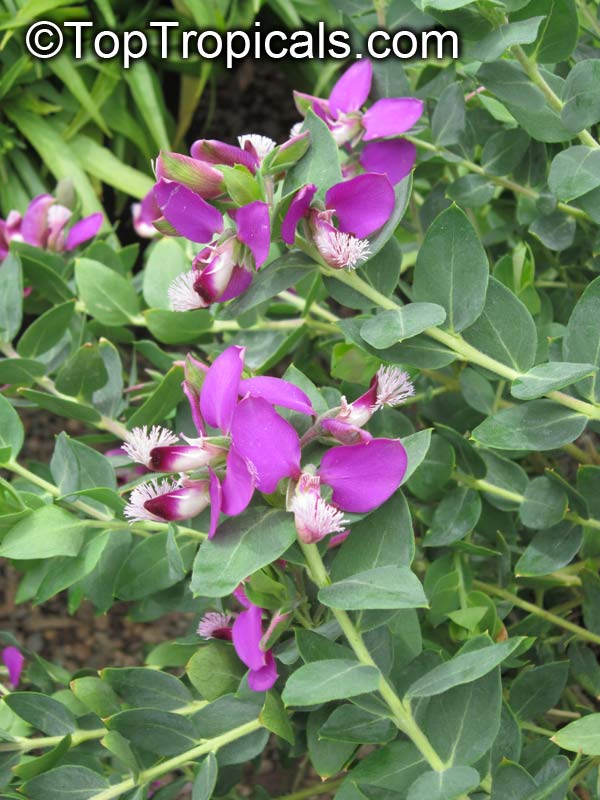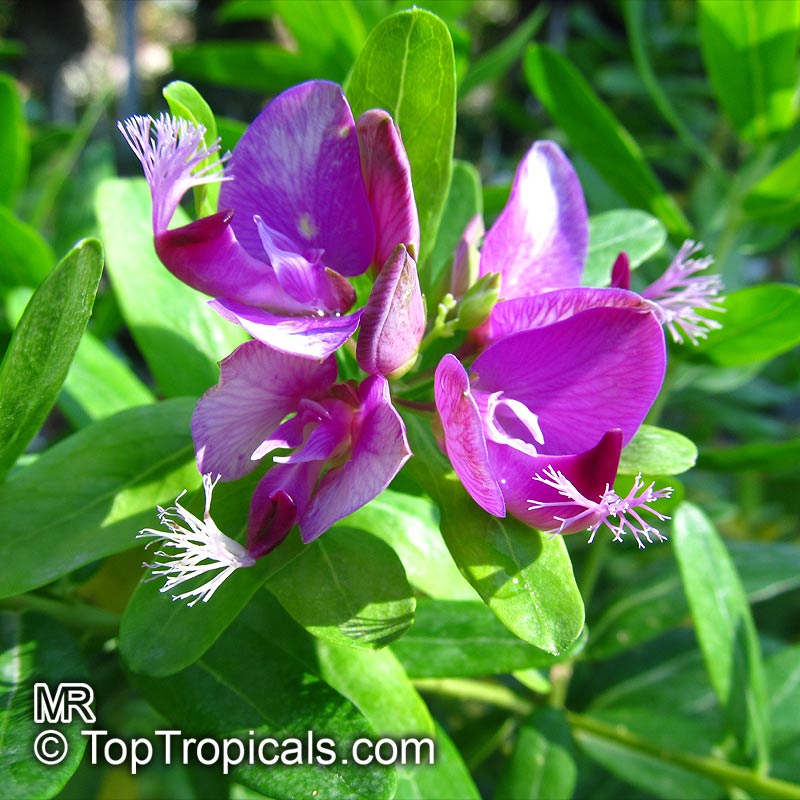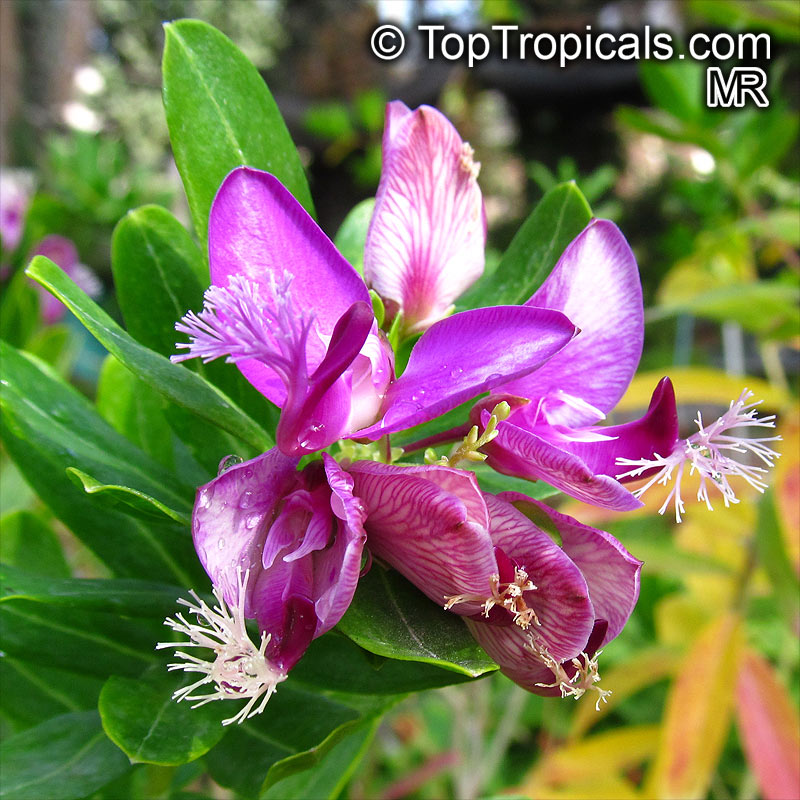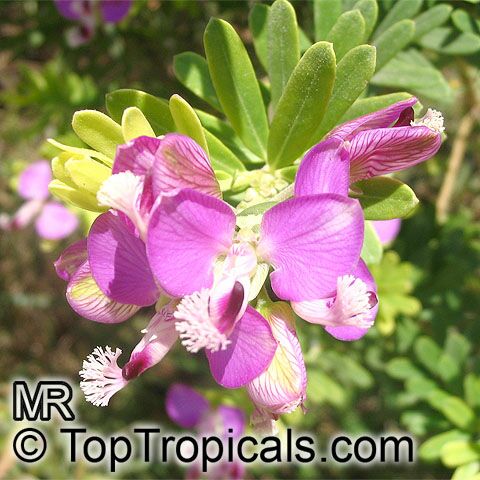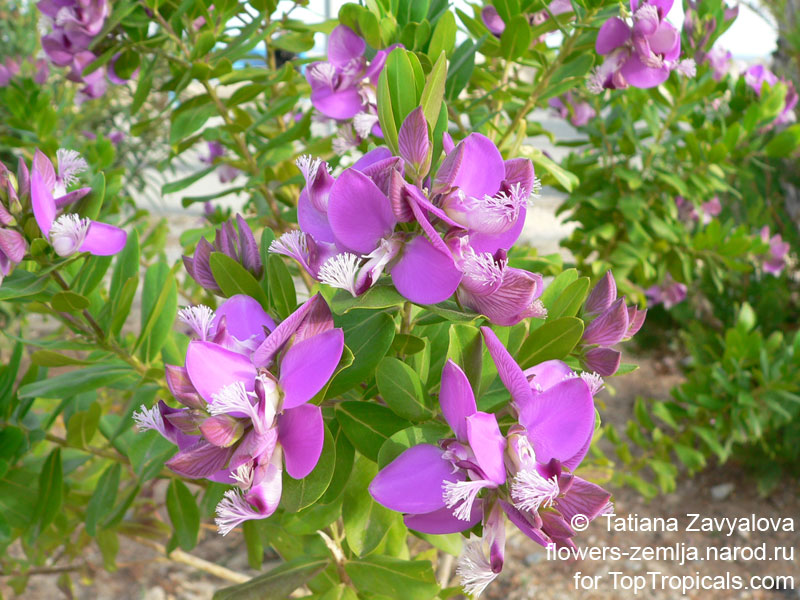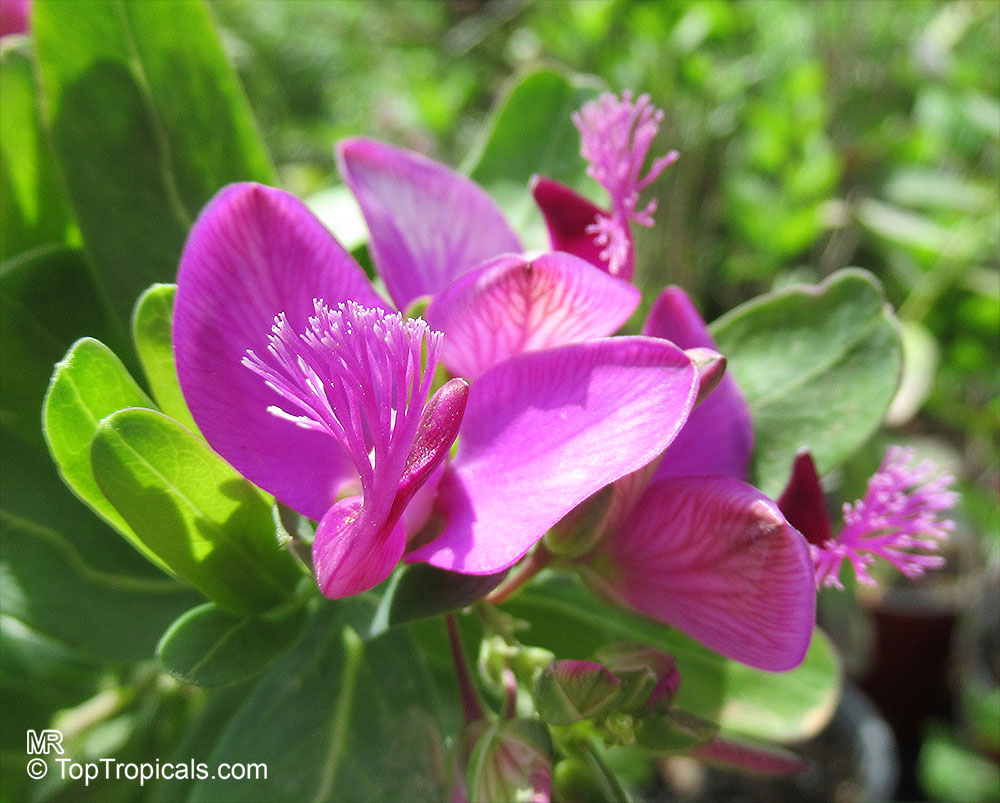Pictogram Guide · Mouse over pictogram for definition
Polygala myrtifolia
September bush, Chupman FieldsFamily: Polygalaceae
Origin: South Africa








Polygala is an old Greek name from the words polys meaning much and gala meaning milk, the name given to this genus for some of its members which have the reputation for promoting the secretion of milk. The species name myrtifolia means myrtle-like leaves. Polygala myrtifolia varies in form as it changes to adapt to the different areas it grows in, from the harshness of the coast to the drier inland climates. An evergreen shrub, the most common forms reach about 3 to 4 ft in height with a few upright-growing stems and slender branches densely covered with leaves that resemble myrtle. The oval-shaped leaves are usually 1" to 2" long and up to 0.5" wide. The leaves are light green, dark green or slightly grey. The flowers are carried in small clusters at the ends of short branches and look a bit like legume (pea or bean) flowers, but are actually quite different. Close inspection will reveal that although they have two wings and a keel, they lack the banner (also called standard) petal. All polygalas also have a showy, and very distinctive brush-like tuft on the keel. The showy petals, beautifully marked with darker veins, are usually in shades of mauve or purple, but can also be pink scarlet, or white. Polygala myrtifolia has blooms throughout the year with a peak in spring when the plants flower profusely. The fruit is a small, winged capsule. In the new garden it is excellent as a fast growing windbreak, hedge and colorful shrub able to grow in most soil types from full sun to semi-shade. Its growth is a bit more lax, producing fewer flowers in the shade, but it grows happily in the difficult pockets that change from full sun to semi-shade with the seasons. Polygala myrtifolia can easily be propagated from seed and tip cuttings preferably taken in spring and autumn.
Polygala × dalmaisiana is the result of crossing P. myrtifolia with P. fruticosa.
Similar plants:
